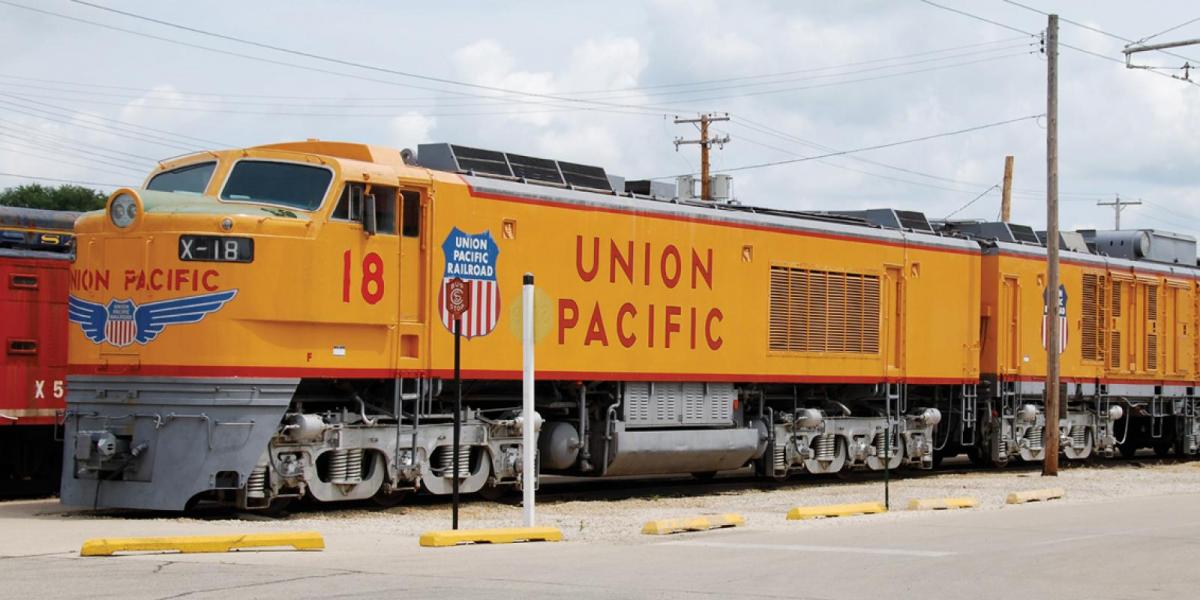In this Time to Model feature, we’re sharing an overview of the Illinois Railway Museum in Union, IL.
Founded in 1953 and established in 1957, the Illinois Railway Museum (IRM) is the largest railway transportation museum in the United States. With over 450 pieces of railroad equipment in its collection including locomotives, freight cars, trollies, and more – IRM is unmatched in size. In addition, it also has numerous displays and an operating railroad line that allows for the operation of electric, steam, and diesel-powered locomotives. These antique locomotives run seasonally throughout the year and are operable thanks to the hardworking volunteers that keep them in pristine condition.
The Illinois Railway Museum can trace its origins back to almost 70 years ago. Ten railroad enthusiasts who believed in the importance of preserving railroad history each contributed $100 (nearly $1,000 in 2021 money) to purchase Indiana Railroad no. 65, an interurban car that had just been recently retired and was in imminent danger of being scrapped. This was in 1953. At that time, the museum grounds were located on the site of the Chicago Hardware Foundry in suburban North Chicago, along the tracks of the Chicago North Shore & Milwaukee interurban line. It was initially known as the Illinois Electric Railway Museum but the “Electric” was removed in 1962.
Following the acquisition of car no. 65, the collection continued to grow, reaching some 40 pieces of equipment by 1964. No one had anticipated the growth rate. Within ten years, the museum had outgrown its cramped space at the foundry and it was decided that the museum should relocate to an empty field east of Union. The move made sense because the long-abandoned right-of-way of the Elgin & Belvidere Electric Railway could be purchased by paying the back taxes on the property. This meant the rapidly-growing museum could operate passenger trains if the track was rehabilitated. In the beginning, a mile and a half of right-of-way and a small 26-acre plot of land where the depot now sits were purchased by the museum. The collection of 40 pieces of equipment was transported to Union in 1964.
The former Elgin & Belvidere Electric Railway was built in 1907. Bion J. Arnold, an electric railway “pioneer” of sorts was the founder. The interurban paralleled the Chicago & North Western Railroad between its two namesake cities. The small passenger railroad company built the world’s first fully automatic substation in the town of Union, an engineering feat at the time. The E&B would operate until 1930 when competition from the automobile industry and the dire economic times of the Depression led to the struggling company filing for bankruptcy. The tracks were eventually abandoned and removed soon thereafter and the railroad’s interurban passenger cars were scrapped. Although it appeared to be the end of this once prosperous interurban railroad, it was only the beginning.
Thirty-six years after the original E&B was abandoned, the Illinois Railway Museum’s first electric car was operated over the re-built railroad right-of-way. Two years later, the museum’s first steam engine ran in 1968. According to IRM, the depot was moved from its original location in nearby Marengo, IL in 1967. Five years later, the first of thirteen storage barns were built in 1972. Eleven years later, the streetcar loop was completed in 1981 which made IRM one of only a handful of museums in the United States to operate streetcars, electrics, steam, and diesel locomotives all in one place.
In the proceeding decades, visitor amenities were improved at the Museum with the opening of the Central Diner in 2003 and the Schroeder Store in 2017. Today, the museum is 100 acres while the mainline railroad has been extended to include nearly five miles of the former E&B right-of-way. The extension of the line occurred in the late 80s and early 90s. In addition, nearly four miles of track on the museum grounds is now under the cover of shelters, providing cover from the sun and elements for the vast majority of IRM’s equipment – which is crucial to the preservation of historic locomotives, along with passenger and freight cars.
In 2015, the Illinois Railway Museum assisted ScaleTrains.com in the research and development phase of the GTEL 8,500HP “Big Blow” Turbine project by allowing the to photograph and measure locomotive #18, one of only two remaining Super Turbines in existence. Thanks to their preservation efforts, ScaleTrains.com was able to deliver accurate scale models of Union Pacific’s most powerful locomotives. The company just announced its most recent run of GTEL 8,500HP “Big Blow” Turbines which include new road numbers that were previously unavailable. You can learn more about the model on our website.












